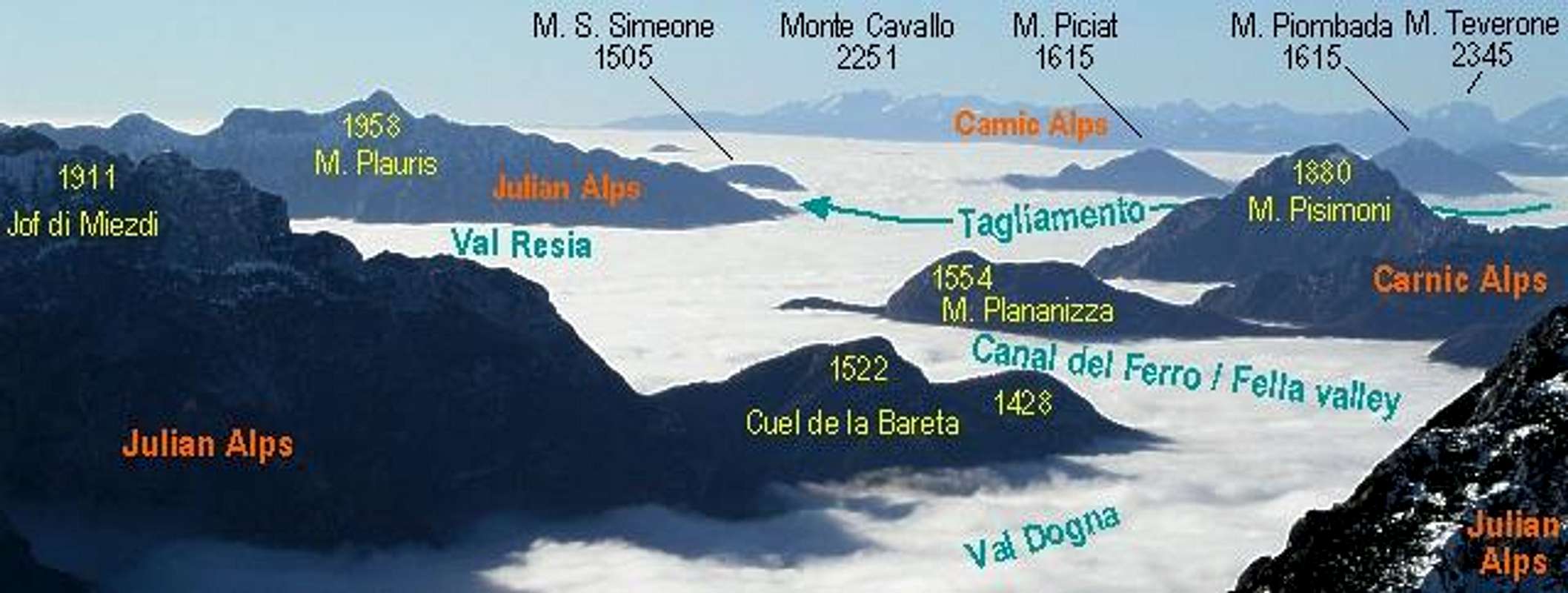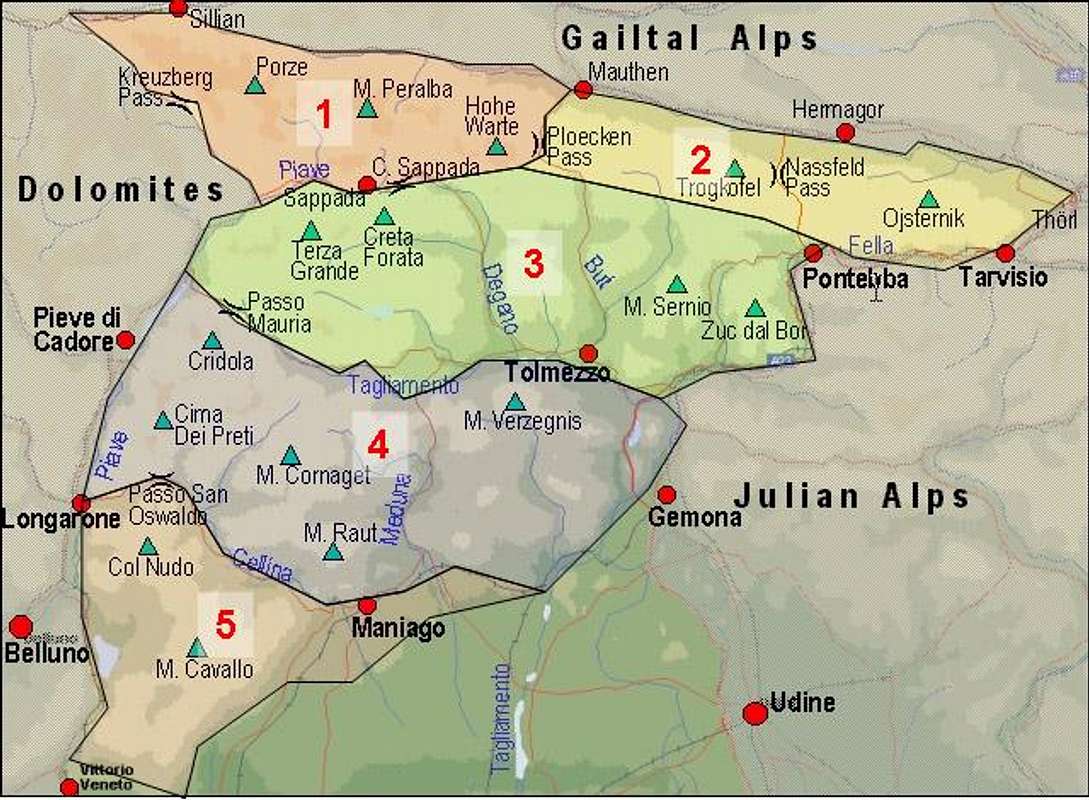Overview
![Prealpi Carniche (South) photo_id=118795]() View from the western Julian Alps towards the southwest. Monte Cavallo in the southern Prealpi Carniche can be seen in the background. Photo by Vid Pogachnik
View from the western Julian Alps towards the southwest. Monte Cavallo in the southern Prealpi Carniche can be seen in the background. Photo by Vid Pogachnik
As discussed in a
thread in the Europe Forum we divided the Carnic Alps Mountain Range into five subgroups. The Prealpi Carniche (South) is the third group to be posted to SP and is the southernmost subgroup of the whole range.
![]()
 17055 Hits
17055 Hits
 87.31% Score
87.31% Score
 24 Votes
24 Votes



